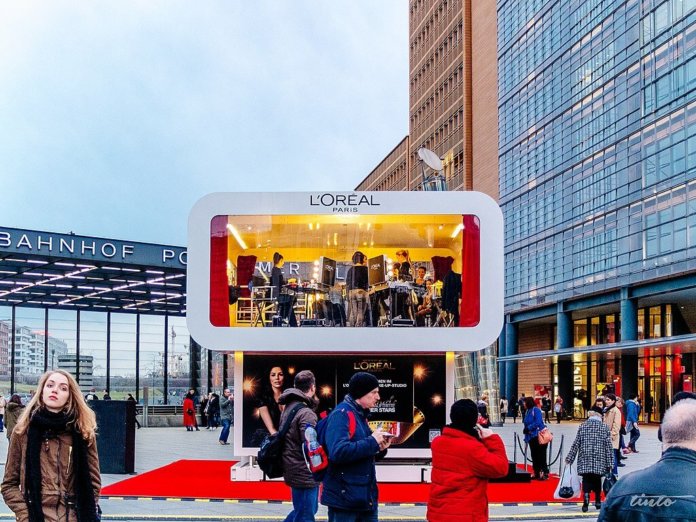
L’Oréal is an international tour de force of the beauty industry. For decades, its products have been at the forefront of face, skin, and hair care, and the company’s reach only has grown larger with the passage of time.
Yet for a company so ubiquitous in our lives, not much is known about its inner workings. Despite being a family-owned and run company, the face of that family, Liliane Bettencourt, is notorious for being a virtual unknown in the public eye, despite being the richest woman in the world. However, a series of political and personal scandals including what later became known as ‘France’s Watergate’ has thrust the secretive family into the spotlight. This is the story of the rise of L’Oréal and the turbulent history of its owning Bettencourt family.
The L’Oréal Story
The L’Oréal story begins in France at the turn of the 20th century. Looking for a new way to try and meet the needs of young women looking to dye their hair, a chemist by the name of Eugène Schueller began creating synthetic hair dyes in his kitchen. In 1909, he successfully developed the Auréole, the first commercially viable chemical hair dye. Schueller spent his nights producing batches of the product, which he would sell to local hair salons during the day. Within two years Schueller founded a company called Société Française des Teintures Inoffensives pour a Cheveux (SFTIC), which would later become L’Oréal.
By 1920, L’Oréal products were available in 20 countries including Italy, the U.S., Brazil, the Soviet Union, and Holland. While the operation was a small one consisting of just three research chemists and ten sales representatives, the advent of the Jazz Age – a time where the style, shape, and color of hair suddenly saw an explosion in popularity amongst women – was followed by a tremendous increase in hair salons, which in turn fueled L’Oréal sales like never before.
Over the next few decades, L’Oréal continued to invest in R&D, giving it the honor being one of the first to create a host of modern cosmetics staples, such as hairspray, commercial sunscreen, waving lotion, and face cream. In the 1960’s, its focus would shift into M&As of popular brands such as Lancome and Garnier, many of which were massively successful for the company. In recent years, the company has shifted its research focus on anti-aging products as the global market for anti-aging has surged to $292 billion by 2015. With a patent portfolio of 35,000 patents and R&D spending that is twice the industry standard, the French giant has grown into a €25 billion company, employing more than 78,000 employees world wide.
The Mysterious Rise and Fall of Liliane Bettencourt
As L’Oréal solidifies its dominance in global cosmetics, there has been a surge of interest surrounding the life of Liliane Bettencourt, the daughter of Schueller and following his death in 1957, the sole heiress to the company. In 2013, she was declared to be not only the richest person in France, but the richest woman in the world, with a net worth of $38 billion thanks to her 33% ownership of L’Oréal.
Little is known about Liliane Bettencourt’s past roles within the company, aside from the fact that she served as an apprentice to her father as a teenager. What is certain is that she held a seat on the L’Oréal board of directors until 1995, and her sale of nearly half her stock to Nestle in the 1970’s set the stage for L’Oréal to expand into overseas markets such as Japan.
With so much of the billionaire heiress’s life shrouded in mystery, the world was stunned to see it spill out into the open in 2008, when her daughter and member of the L’Oréal board of directors Francoise Bettencourt-Meyers filed a lawsuit against celebrity photographer and socialite Francois-Marie Banier. Banier, Francoise claimed, was a glorified “gigolo” who convinced an aging Bettencourt to grant him gifts worth up to $1.5 billion, taking advantaged of her compromised mental state. In court proceedings, Francoise filed a criminal complaint saying that Banier had exploited her mother out of extravagant purchases including a life insurance policy worth €253 million, another life insurance policy worth €262 million, €20 million works of art, including paintings by Picasso and Matisse, and substantial cash gifts.
In the midst of the lawsuit, Bettencourt became embroiled in a political scandal when one of her accountants alleged that she made illegal cash donations to conservative French politicians including French President Nicolas Sarkozy who was given a donation of €150,000 for his 2007 presidential bid. In addition, it was alleged that Bettencourt may have avoided paying taxes by keeping a substantial amount of cash in undeclared Swiss bank accounts.
The unending media frenzy came to a close however, when daughter Francoise filed an application to have Bettencourt declared mentally incompetent and incapable of managing her fortune. French courts handed down a three-year sentence to Banier fining him €250,000 and ordering him to pay back over €15 million to the Bettencourt family. In addition, Francoise was made guardian of the Bettencourt fortune, while her son and fellow L’Oréal board member Jean-Victor Meyers has been charged to oversee Bettencourt’s health and personal life, laying rest to a tragic turn of events for a mysterious family behind the largest cosmetics company in the world.









